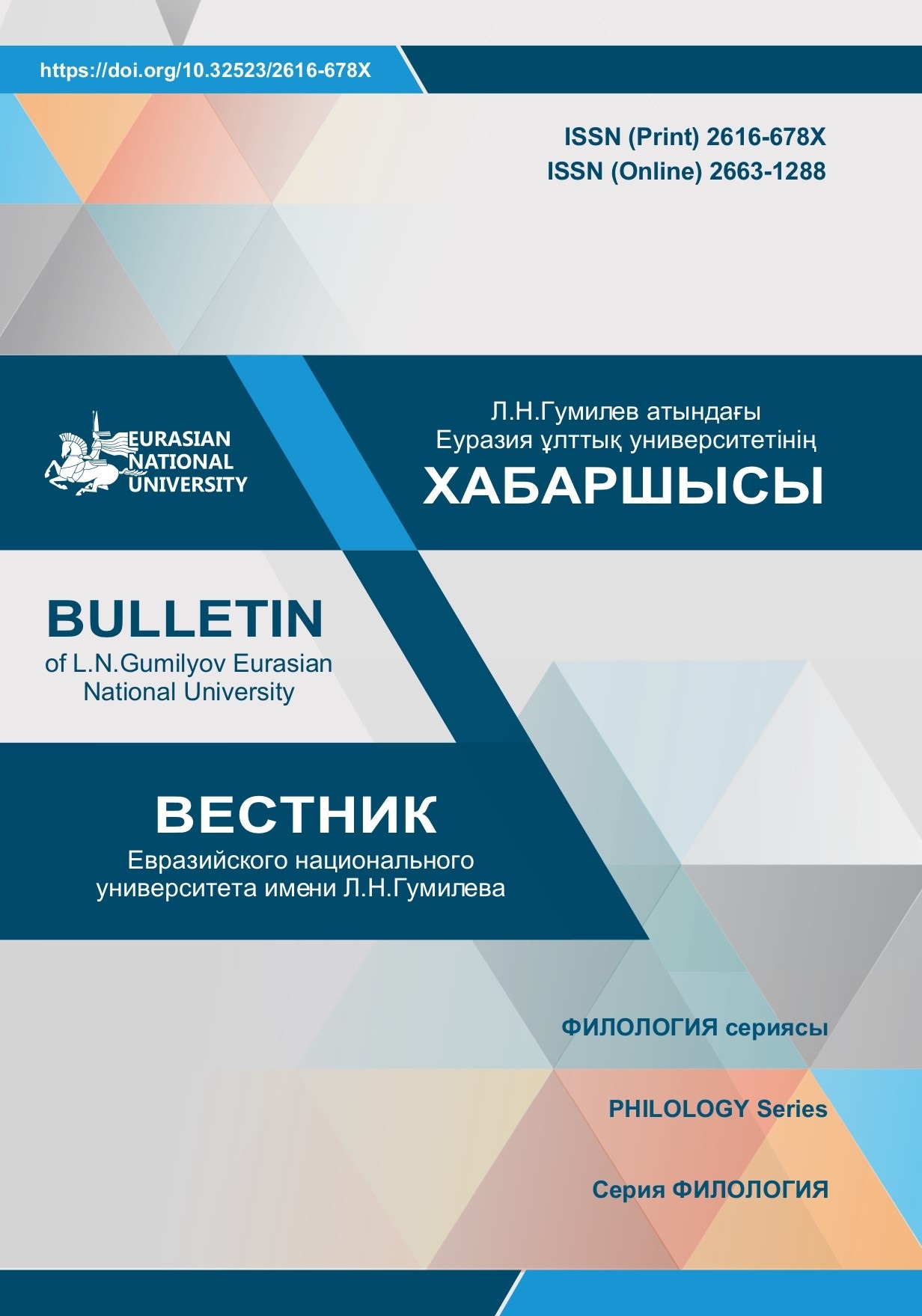Function of mythical motifs in the text (based on M. Magauin’s story “Kipchak Beauty”)
Views: 215 / PDF downloads: 310
DOI:
https://doi.org/10.32523/2616-678X-2024-147-2-192-202Keywords:
motif, text, myth, structure, alter ego, microstory, leitmotiv.Abstract
The literary work is an object that requires special methodological research in terms of
Literary studies. Since the literary work reflects cognitive, ideological and emotional characteristics, so it requires a comprehensive philological analysis. True essence and creative imagination harmonize in the internal content of literary text, and there is a constant unity of subjectivity and objectivity. Thus, author’s
worldview, personal position, and evaluative thinking are formed. Motif is an important category in the literary work. The leading idea and the writer’s personality can be recognized through the motif.
The article considers the main concepts about the theoretical character of the motive, examines its functions in the space of the work. Various definitions of the motive given by philologists are analysed, types
of motives, their manifestation, application in combination with other literary categories are considered. The study is based on the peculiarity of mythical motive in the text structure. The analysis of M. Magauin’s
story “Kipchak aruy” in determining the ideological, artistic and aesthetic function of mythical motive in the literary work has been carried out. The microstory of “Kipchak aruy”, that is, a motive-image related to the Kipchak balbal sculptures at the beginning of motives is given, and the connection between the author and character is shown within the framework of the concept “alter ego” - “second self”. The attention is drawn to the evolution of the transformation of the motive-image in the text into a leitmotiv, and the
conclusion has been made.







